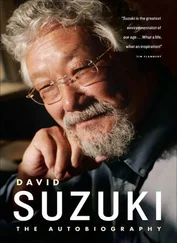It hadn’t occurred to Saeko at the time, but perhaps there was some connection between her father’s disappearance and whatever he had been trying to tell her with this postcard.
Saeko decided to stop in at the library after her meeting that afternoon. The library was on the way home from the TV station, and she had spent a great deal of time studying there as a child. She wanted to have another crack at decoding the hints in her father’s cryptic message. Even if she got nowhere, for a time it would distract her from the pain of being alive.
3
It was Saeko’s first planning meeting at a television station. The only person she knew would be Hashiba, the director of the program. She’d be meeting the rest of the team for the first time.
Saeko got out of her cab at the building’s entrance and had the receptionist at the front desk call Hashiba. The receptionist spoke a few words into the intercom then stated, “Please have a seat on the sofa.” Obligingly, Saeko took a seat on the empty sofa on the other side of the lobby.
Glancing around the room, she noticed a female celebrity that she recognized from TV also waiting. Saeko couldn’t remember the actress’ name off the top of her head, but she was the sidekick on a Friday night variety show. Trying not to stare, Saeko averted her gaze, only to spot a world-famous director chatting with a staff member as he walked by.
Saeko experienced a slight wave of nervousness, accompanied by the vague realization that she was out of place in this environment.
Honestly, she couldn’t understand why the station wanted to make a new program about the missing family in Takato at this late date. As far as she knew, there had been no new developments connected to the case.
The director from the TV station, a man by the name of Hashiba, had contacted her in roughly the middle of the last month. He’d read Saeko’s article about the missing family in Takato and wanted to speak with her.
“What is this in reference to?” Saeko asked cautiously.
“Well, it’s like this …” Hashiba explained that the TV station wanted to do a show on the missing family and were hoping that Saeko could help.
Saeko had put her heart and soul into investigating the Takato incident, but she’d been unable to unearth any new leads. The reaction to her article had been mostly benign. But Saeko’s editor had informed her that her detailed reporting had garnered high regard in media circles. Hashiba’s phone call was direct evidence of that fact.
“Why me?” Saeko was still fairly inexperienced as a reporter and wasn’t sure what to make of the offer. It could be an opportunity to open new doors professionally, or it could just be a big headache.
“The writing and the content was excellent, but most of all, we were deeply impressed with the research,” Hashiba gushed. Then he laid his cards on the table. “Honestly, we came to the conclusion that it would be quicker and easier to use what you know than for us to go to Takato and conduct our own investigation. If you don’t mind my asking, was this the first time you’ve reported on a missing persons case?”
“Well, yes,” Saeko responded.
It was true. It was the first time she’d done an article about a missing persons case. She refrained from mentioning that she’d performed a similar investigation in the past and was well equipped with the relevant skills and contacts.
The thorough investigation of the Fujimuras and their two children that Saeko had conducted during two week-long visits to Takato had been more or less textbook. She had gone to see a local judicial scrivener and acquired the Fujimuras’ residency card, family registry, and appendices — the three fundamentals of a missing persons case. She’d familiarized herself with three generations of their family tree, thoroughly examined their financial obligations and collateral, and the possibility of any extramarital affairs. She’d visited the children’s schools, spoken to their friends to see if the children had had any special issues, and followed up on every possible lead.
All told, Saeko had easily devoted over a hundred hours to the investigation. For the director to redo the same work would take him even longer, given that he lacked Saeko’s experience. From that perspective, it would be a lot more economical to use Saeko’s information, not to mention a lot quicker. Shows like these usually didn’t have a moment of production time to waste.
A man in his thirties emerged into the lobby, holding a cell phone to his ear as he glanced about. It was Hashiba, the director. Saeko got up from the sofa and walked over to meet him. As soon as Hashiba saw her, he ended his phone call, smiled, and bowed.
“Thank you for waiting.”
He was dressed casually, in slim jeans and a denim shirt, and Saeko noticed that he had perfectly flat abs. Somehow he gave off a more innocent vibe than he had at their first meeting.
Was he this good looking? Saeko cocked her head with uncertainty as she followed Hashiba inside.
4
There were seven people in the meeting room, including Saeko. Oki the producer and chief director Hashiba sat at the head of the table, with directors Kagayama and Nakamura on the left and writers Shigeta and Satoyama on the right. Saeko was the only woman in the group.
“Thank you for coming all this way,” Oki said by way of greeting. Then he got straight to the point, explaining the goal of the project. “Here’s the concept. We want to zero in on the pathological phenomenon in modern Japan — the disappearance of 100,000 people each year — incorporating a sort of public investigation element. Ideally, the show would lead to the resolution of some cases.”
Saeko wanted the same thing. She had hoped her reporting would at least bring the investigation closer to the truth. She’d love to have discovered the clue that would lead to the answer — she needed the catharsis that would come with cracking the case. But reality hadn’t conformed to her wishes.
When Saeko made no response, Oki continued. “By the way, Ms. Kuriyama, I’m sure there are things you found out that didn’t make it into your article. Could you please give us a general explanation once more of everything you’ve found out about the case?”
Saeko opened the file in front of her, trying not to make eye contact with any of the men. “As you all know, the four members of the Fujimura family disappeared suddenly on the night of January 22nd of this year.”
“Can we be sure they disappeared on the night of January 22nd?” Hashiba asked promptly.
“To be precise, it was sometime between 10 p.m. that evening and 7 a.m. the next morning.”
“You have a specific time frame?”
“Yes. At around 10 p.m. that evening, a friend of Haruko’s called the house and spoke with her.”
“Haruko?”
“Here. Let’s go over the family tree once more,” Saeko replied, passing out copies of a diagram that showed the Fujimuras’ familial relationships at a glance. “There you have the four members of the Fujimura household. Kota, the husband, age 49, an employee of the local Japan Agricultural Cooperative; his wife Haruko, age 45, a high school teacher in Ina City; daughter Fumi, a first year student at Takato High School; and son Keisuke, a second year student at Takato Junior High. We know that all four were at home at 10 p.m. on the 22nd.”
“This was confirmed by Haruko’s friend who called?” Hashiba wanted to know.
“Of course she didn’t talk to each individual family member,” Saeko replied. “But Haruko’s friend has stated that when she spoke to Haruko, everything seemed normal, and she could hear the voices of the other family members in the living room over the line.”
Читать дальше












